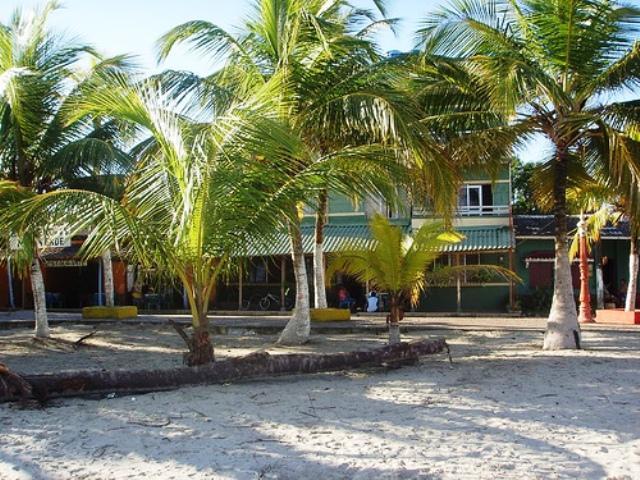Necoclí, Antioquia, Colombia
Suggest Place to Visit
902
Track to location with GPS |
 |
The history of Necoclí is in its beginnings of Spanish conquerors and aboriginal natives. Gateway of the Iberians to Antioquia and inhabited during those times by the Cunas ethnic group, the region has a strong historical tradition and a high socio-cultural value. In the district several indigenous reservations are conserved, 22 kilometers from the head, which constitute a tourist and anthropological scientific attraction.
More or less just two kilometers from the head is precisely the site where the conquering town of San Sebastián de Urabá once stood, where, back in 1509, the conqueror Alonso de Ojeda, considered the founder of the town, passed.
In relation to its name, Necoclí, there is a legend that tells how a tired traveler was thirsty and came to the place to calm it down, but in response they told him that “there was no ´coclí´ there”, being the “coclí” a very common in the region.
Still in 2009, a great variety of races and cultures converge in the district. There are still several indigenous reservations considered today historical-cultural heritage: the territories of the Zenúes and Tule communities, and the reservations of Caimán Nuevo and El Volao.
Necoclí is one of the municipalities that has best preserved its ecosystem in the northern Urabá of Antioquia. An hour by boat, through choppy seas, you reach Ensenada de Rionegro, in Punta Arenas, at the northern end of the Gulf of Urabá. This is the main school of fish in the region, where tarpon, grouper, snappers and other species are found. If you are lucky you have the opportunity to find a manatee, a species in danger of extinction.
The surrounding mangroves are also a refuge for hundreds of migratory birds, such as earwigs, seagulls and pelicans, declared species of municipal reserve.
Necoclí is a municipality in Colombia, located in the Urabá subregion in the department of Antioquia. It limits to the north with the Caribbean Sea and with the municipality of San Juan de Urabá, to the east with the municipality of Arboletes, to the south with the municipality of Turbo and to the west with the Caribbean Sea. Its head is 424 kilometers from the city of Medellín, capital of the department of Antioquia. The municipality has an area of 1,361 square kilometers.
Appellate: Historical Bastion of America.
It is administratively divided into 7 townships: Pueblo Nuevo, El Totumo, El Mellito, Las Changas, Zapata, Mulatos and Caribia, and 136 villages among which are San Sebastián, La Comarca, San Isidro, Mello, Villavicencio, Santa Fe-La Islita , Palmares Cenizosa and Bobal-La Playa. The district is connected by road with the neighboring municipalities of San Juan de Urabá, Arboletes and Turbo.
Economy
Agriculture: It stands out with the banana and the coconut. It also produces corn, rice, yams, beans, yucca and various fruits
Large cattle, zebu (milk and cheese industry)
Tourism: it is the economic activity with the greatest potential, especially due to the use that can be made of the 95 kilometers of beach that the district has.
Mining: gold
Fishing in good volume
Wood and its basic industry
As for handicrafts, products made with coconut shells stand out: handcuffs, necklaces and bracelets, hammocks and hammocks, wooden curtains and lamps.
Parties
Fiestas del Coco and corralejas de toros, the first bridge in January.
National Bullerengue Festival in October
Gastronomy
Very varied dishes of Seafood, Rice with coconut, Banana, Yuca, Fish and Sweets made with fruits. There is also offer of typical Antioquia cuisine and roasts.
Places of interest
Parish Church of Our Lady of Carmen
Natural heritage:
Indigenous reservations: Resguardo del Caimán, 22 kilometers from the head road to the municipality of Turbo, occupies the villages of Caimán Viejo and Caimán Nuevo; El Volao, located 70 kilometers via Las Changas to the municipality of Arboletes
Ecological places, headed by the Ensenada de Rionegro: reached by sea, one hour from the municipality
Ciénagas: El Salado and Marimonda
Ensenada del Río Negro located in the northern part of the gulf
Beaches: El Totumo, El Pescador, Playa Linda and others
Fourteen mud volcanoes. The best known is the Hacienda Virgen del Cobre, 2 kilometers from the head. Other volcanoes are La Cenizosa, El Carlos, and El San José de Mulatos, which is constantly erupting
Cerros de San Sebastián, on whose base the town of San Sebastián de Urabá was founded in 1509. There are also the hills: El Águila, El Yoqui and El Caballo, among others
Cascada del Carlos, 8 kilometers from the head.
Hotels: Punta Caribana Casa Hotel, Hotel san Sebastián, Casa Hotel Dora mar
Restaurants: Sabor y Ceviche, La Antorcha, El Ganadero
Comments
We don´t have yet any comments about:
Necoclí
Necoclí
Be the first to leave a comment as it is very important to inform other people
Outros locais a visitar
Within a radius of 20 km from:Necoclí
Unfortunately we do not have information on other places to visit in this area yet
Hotel reservation near Necoclí within a radius of 20 km
No results
Why to book with BOOK HOTEL LISBOA
The best prices
Our partnerships with the world´s largest operators offer research on the best market prices.
More options
At Rotas Turisticos you can book the hotel, buy the air ticket, book the transfer from the airport to the hotel and vice versa, book the local excursions, rent the car, take travel insurance and consult the places to visit and where to go.
Holiday Tips & Destinations
Hundreds of holiday destinations with all the options that allow you to easily choose the destination that best suits your dream vacation.
BOOK HOTEL LISBOA
Links





